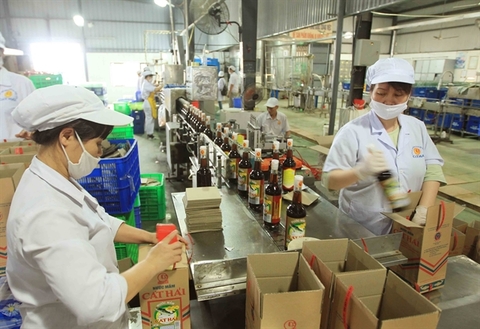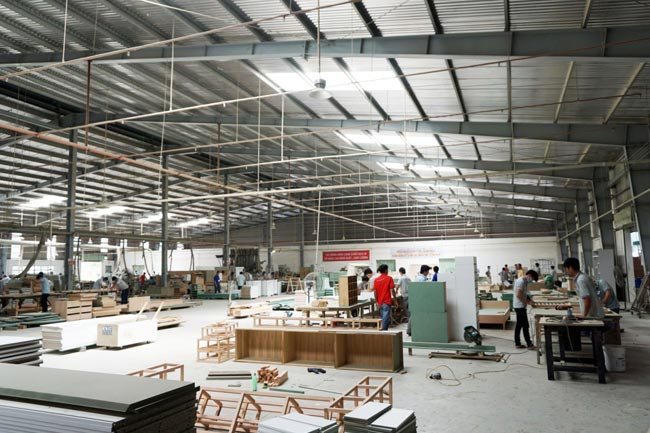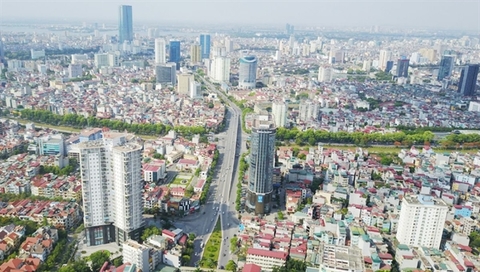Vietnam's low labor cost appeal waning: Fitch
Vietnam's low labor cost appeal waning: Fitch
With recent minimum wage increases, Vietnam’s low labor cost allure for foreign investors is on the decline, says a Fitch Group report.

Vietnam was among three countries with the largest minimum wage growth in East Asia, with an average year-on-year growth rate of 8.8 percent between 2015 and 2019, according to the financial information services provider.
Ahead of Vietnam were Laos and China, where the minimum wages rose 14.6 and 9.8 percent each year respectively.
The 2019 minimum wage in Vietnam also increased by an average of 5.3 percent across its four regions. Region 1 (covering the urban areas of Hanoi and Ho Chi Minh City, the country's two biggest cities) saw the largest increase in the minimum wage of 5.9 percent to $180 this year.
A World Bank report in December last year also found that Vietnam’s labor costs, which it defines as the cost of all payments to all workers in a firm divided equally, was the highest among comparator countries in Southeast Asia.
It said wage costs of about $2,739 per worker for the median Vietnamese firm was about twice as high as in Laos, Myanmar and Malaysia, and about 30 to 45 percent higher than in Cambodia, Thailand and the Philippines.
However, the higher costs also seem in line with productivity levels and thus do not seem to be a major obstacle to competitiveness, the report said.
Wages to continue rising
Fitch predicts the average nominal minimum wage to continue rising across East and South East Asia over the short-to-medium term.
This is the result of the region’s transition into high-value manufacturing and service-based economies associated with higher labor costs, while moving away from agriculture and low-cost labor-intensive sectors, which generally have lower wages, it said.
"This, together with robust economic growth and the rising costs of living, risks exacerbating regional wealth inequality, thereby emboldening workers’ demands for higher minimum wages."
Meanwhile, wages are being pushed upwards as authorities in countries such as Cambodia, Vietnam and the Philippines respond positively to worker and union demands in order to prevent the possibility of social unrest, the report said.
This will undermine the region’s overall appeal to labor-intensive business activities, which will require countries to find production alternatives such as moving into more knowledge-driven industries, or integrating artificial intelligence and automation into more aspects of production, Fitch added.
Skilled workforce for the future
Speaking to the press last December, Nihad Ahmed, senior economist for Vietnam at global economic analysts FocusEconomics, said that investors had been historically drawn to Vietnam’s enormous untapped potential promising high returns, along with a low-cost workforce and high endowment of natural resources.
However, she said that one of Vietnam's current weaknesses is the lack of skilled workers, emphasizing that Vietnam is far behind China, Singapore, Malaysia and Thailand in this area at a time when developing a highly skilled workforce is critical for attracting FDI into value-added industries.
In a government draft on a new national FDI attraction strategy for 2018-2030, the Ministry of Planning and Investment (MPI) also conceded that despite registering record levels of FDI in the past few years, Vietnam is having trouble attracting investment into high-added value sectors.
The country is relying on temporary tax incentives and low labor costs in low-skilled manufacturing sectors to gain an advantage, but this is not helping bring in FDI to the high-tech sector, which the country needs to shift towards, the ministry said.
Among the solutions proposed by the MPI in the draft strategy was to conduct a national multi-sector coordination program to link the state, businesses and educational institutions towards producing a more technically qualified workforce.
In addition, Vietnam needs to undertake long-term education reform, especially the integration of language and soft skills into all vocational training programs and university courses. Institutions should be given more autonomy to meet the needs of businesses, it said.
The government has in the past year shown its keenness to move the country towards high-tech development. At a conference early this month, Prime Minister Nguyen Xuan Phuc called for Vietnam to focus on technological innovation to beat the middle income trap, since resources and cheap labor are no longer its advantages.
He later issued a five-pronged directive to the Ministry of Science and Technology for boosting hi-tech growth.





















